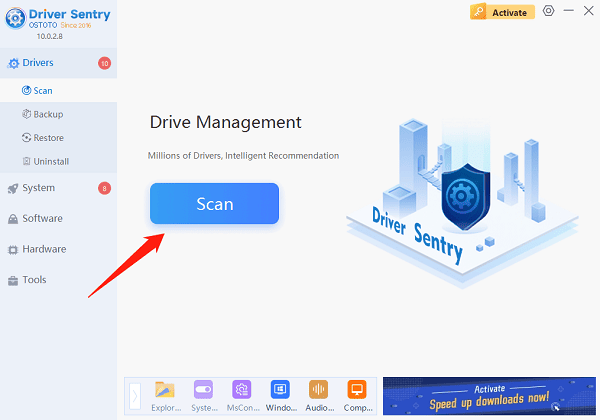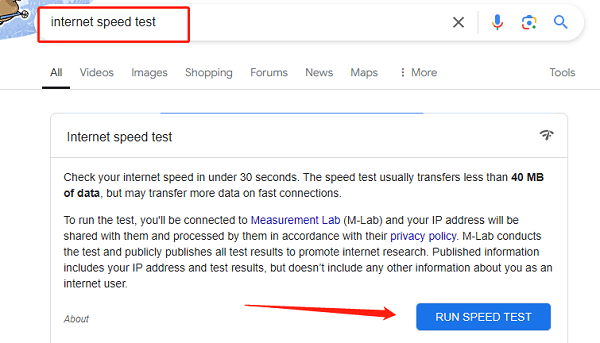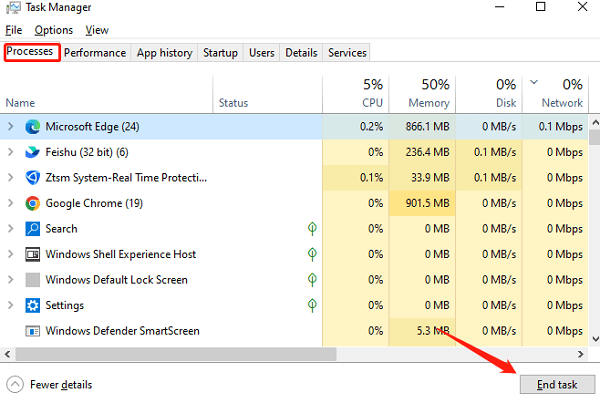
In modern gaming, network latency (Ping) significantly impacts player experience, especially in multiplayer games. This article offers effective methods to reduce latency and improve your gaming experience.
1. Update Network Drivers
Network drivers manage communication between your device and the router. Outdated or faulty drivers may impact network speed and stability. Regularly check and update your network adapter drivers to keep them up to date. Using tools like Driver Sentry can automatically detect driver updates, saving you time and reducing the risk of downloading or installing incorrect drivers.
Download the latest version of Driver Sentry, install it, and run a scan.

After the scan, locate any outdated network drivers in the list and click "Upgrade".
Restart your computer to ensure the updated drivers take effect.
2. Check Game Server Status
Many game companies post server maintenance notices on their websites or social media, detailing downtime or progress updates.
Check the official Twitter, Facebook, or Reddit pages of the game to see if other players are experiencing similar issues.
Some sites offer server status monitoring for multiple games, allowing you to quickly check the online status of game servers.
3. Test Network Speed Online
Visit a speed-testing site like Speedtest.net and click "RUN SPEED TEST".

Wait a few seconds as the site measures your download speed, upload speed, and Ping (latency).
Ensure the Ping value is low (ideally below 50ms); a high Ping can lead to lag and interruptions in games.
4. Select the Appropriate Game Server
Most games offer multiple server options; select the one closest to your physical location to reduce data transfer distance and lower latency.
Many games also display server load levels. Choose a server with a low load to avoid lag caused by server overload.
If experiencing high latency on a specific server, try switching to another region's server to improve connection quality.
5. Close Background Programs and Download Tasks
Open Task Manager by pressing Ctrl+Shift+Esc to check for programs consuming high CPU, memory, and network bandwidth.
Right-click unnecessary programs and select "End Task" to free up system resources.

Pause or cancel any ongoing downloads or updates to allocate full bandwidth to your game.
6. Optimize Router Settings
If multiple Wi-Fi networks are nearby, interference might affect your signal. Access your router's settings and switch to a less congested Wi-Fi channel.
Enable Quality of Service (QoS) to prioritize game traffic, reducing bandwidth usage from other devices and minimizing latency.
Make sure your router uses the latest security protocol (such as WPA3) to prevent unauthorized devices from affecting your bandwidth.
If the router has been running for a long time, restarting it can often restore optimal performance.
7. Use a Wired Connection
Ensure you have a high-quality Ethernet cable to avoid signal loss from poor cables.
When possible, connect your computer directly to the router via Ethernet rather than using Wi-Fi, as this reduces network latency and packet loss.
Confirm that the Ethernet port and cable connections are secure to maintain a smooth data flow.
8. Upgrade Your ISP Plan
Contact your ISP to inquire about higher bandwidth options.
If multiple ISPs are available in your area, compare their speeds and pricing to find the best package for your needs.
Fiber broadband usually offers faster, more stable connections, ideal for bandwidth-intensive online gaming.
Follow these eight steps to reduce network latency and enhance your gaming experience. If issues continue, contact your network provider or the game's support team for help.
See also:
How to Fix Bluetooth Speaker No Sound Issue
8 Ways to Fix Realtek Microphone Not Working